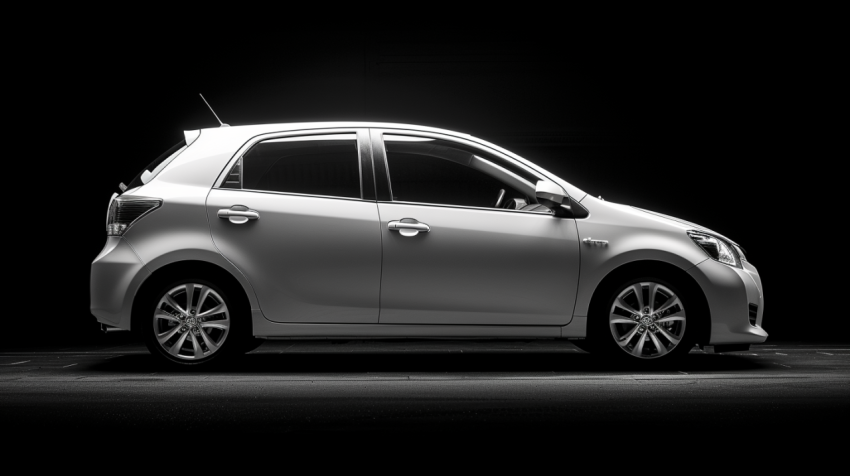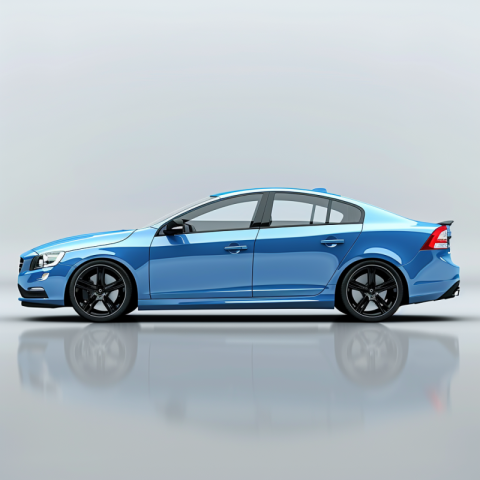











The Rise of Smart Cars: Understanding Advanced Driver-Assistance Systems
Modern cars are increasingly equipped with Advanced Driver-Assistance Systems (ADAS), a suite of technologies designed to enhance safety, improve the driving experience, and pave the way for autonomous driving. These systems use a combination of sensors, cameras, and sophisticated software to monitor the vehicle's surroundings, provide assistance to the driver, and even intervene in critical situations to prevent accidents.
Levels of Automation:
It's important to understand that ADAS represents a spectrum of automation, ranging from basic driver assistance to fully autonomous driving. The Society of Automotive Engineers (SAE) has defined six levels of driving automation:
- Level 0 (No Automation): The driver is in complete control of the vehicle.
- Level 1 (Driver Assistance): The vehicle can assist with either steering or acceleration/braking, but the driver remains in control and must supervise the system at all times (e.g., adaptive cruise control or lane keeping assist).
- Level 2 (Partial Automation): The vehicle can control both steering and acceleration/braking under certain conditions, but the driver must remain engaged and ready to take over at any time (e.g., Tesla Autopilot, Cadillac Super Cruise).
- Level 3 (Conditional Automation): The vehicle can handle most driving tasks under specific conditions, but the driver must be ready to intervene when prompted by the system.
- Level 4 (High Automation): The vehicle can perform all driving tasks under specific conditions without any driver intervention.
- Level 5 (Full Automation): The vehicle can perform all driving tasks under all conditions, without any human intervention required.
Currently, most vehicles on the road with ADAS fall into Levels 1 and 2, with Level 3 systems beginning to emerge in select models.
Key ADAS Features:
Here are some of the most common and important ADAS features found in modern cars:
- Adaptive Cruise Control (ACC): Maintains a set speed and automatically adjusts it to maintain a safe distance from the vehicle ahead. Some advanced systems can even bring the car to a complete stop and resume driving in stop-and-go traffic.
- Lane Departure Warning (LDW): Alerts the driver if the vehicle begins to drift out of its lane unintentionally.
- Lane Keeping Assist (LKA): Provides gentle steering inputs to help keep the vehicle centered in its lane.
- Automatic Emergency Braking (AEB): Detects an imminent collision and automatically applies the brakes to prevent or mitigate the impact.
- Forward Collision Warning (FCW): Warns the driver of a potential collision with a vehicle or object ahead.
- Blind Spot Monitoring (BSM): Detects vehicles in the driver's blind spot and provides a warning, usually a visual or auditory alert.
- Rear Cross-Traffic Alert (RCTA): Warns the driver of approaching vehicles when backing out of a parking space or driveway.
- Parking Assist: Helps the driver park the vehicle, either by providing steering guidance or by automatically steering the car into a parking space.
- Traffic Sign Recognition (TSR): Detects and displays traffic signs, such as speed limit signs, to the driver.
- Driver Drowsiness Detection: Monitors the driver's behavior for signs of drowsiness and provides an alert if necessary.
- Pedestrian Detection: Detects pedestrians in the vehicle's path and may warn or apply emergency braking.
- Night Vision: Enhances visibility at night by using infrared sensors to detect objects and display them on a screen.
Sensors and Technology:
ADAS features rely on a variety of sensors and technologies to perceive the vehicle's environment:
- Cameras: Provide visual information about the vehicle's surroundings, used for lane detection, object recognition, and traffic sign recognition.
- Radar: Uses radio waves to detect the distance, speed, and position of objects, commonly used for adaptive cruise control and automatic emergency braking.
- Lidar: Uses laser pulses to create a 3D map of the vehicle's surroundings, providing highly accurate distance measurements. Currently used less often, typically in higher-end ADAS systems or autonomous driving prototypes due to cost.
- Ultrasonic Sensors: Emit sound waves to detect nearby objects, primarily used for parking assistance.
Benefits of ADAS:
- Enhanced Safety: ADAS features can significantly reduce the risk of accidents by assisting the driver and intervening in critical situations.
- Improved Driving Convenience: Features like adaptive cruise control and lane keeping assist can make driving less tiring, especially on long trips.
- Reduced Stress: By providing an extra layer of safety and assistance, ADAS can help reduce driver stress and fatigue.
- Pathway to Autonomous Driving: ADAS technologies are the building blocks for fully self-driving cars.
Limitations of ADAS:
- Not a Substitute for Attentive Driving: ADAS features are designed to assist, not replace, the driver. Drivers must remain engaged and attentive at all times.
- System Limitations: ADAS may not function properly in all conditions, such as poor weather, low visibility, or on roads with unclear lane markings.
- Cost: ADAS features can add to the cost of a vehicle.
- Potential for Over-Reliance: Drivers may become overly reliant on ADAS, leading to complacency and reduced situational awareness.
The Future of ADAS:
ADAS technology is constantly evolving, with new features and capabilities being developed all the time. As sensors become more sophisticated, software more intelligent, and regulations adapt, we can expect to see increasingly advanced ADAS features that will further enhance safety and pave the way for a future of autonomous driving. The integration of artificial intelligence (AI) and machine learning will play a crucial role in making ADAS systems more robust, reliable, and adaptable to complex driving scenarios. The ultimate goal is to create vehicles that can navigate roads and traffic safely and efficiently, with minimal or no human intervention. However, achieving this level of automation will require overcoming significant technological, regulatory, and ethical challenges.
Conclusion:
Advanced Driver-Assistance Systems are transforming the driving experience, making cars safer, more convenient, and more intelligent. While not a replacement for attentive driving, ADAS features provide valuable assistance and are a crucial step towards a future of autonomous vehicles. As technology continues to advance, we can expect even more sophisticated and capable ADAS systems that will further revolutionize the way we drive. The ongoing development of these systems will require careful consideration of their limitations, potential risks, and societal impact to ensure that they are deployed responsibly and for the benefit of all.
advanced driver-assistance systems, ADAS, adaptive cruise control, lane keeping assist, automatic emergency braking, forward collision warning, blind spot monitoring, rear cross-traffic alert, parking assist, traffic sign recognition, driver drowsiness detection, lane departure warning, pedestrian detection, ADAS features, ADAS technology, ADAS safety, autonomous driving, self-driving cars, car safety features, driving assistance systems, levels of driving automation, SAE levels of automation, How does ADAS work, What are the benefits of ADAS, What are the limitations of ADAS, future of ADAS, ADAS vs autonomous driving, best cars with ADAS, ADAS regulations, ADAS cost, ADAS reliability, ADAS sensors, ADAS cameras, ADAS radar, ADAS lidar, ADAS ultrasonic sensors.

